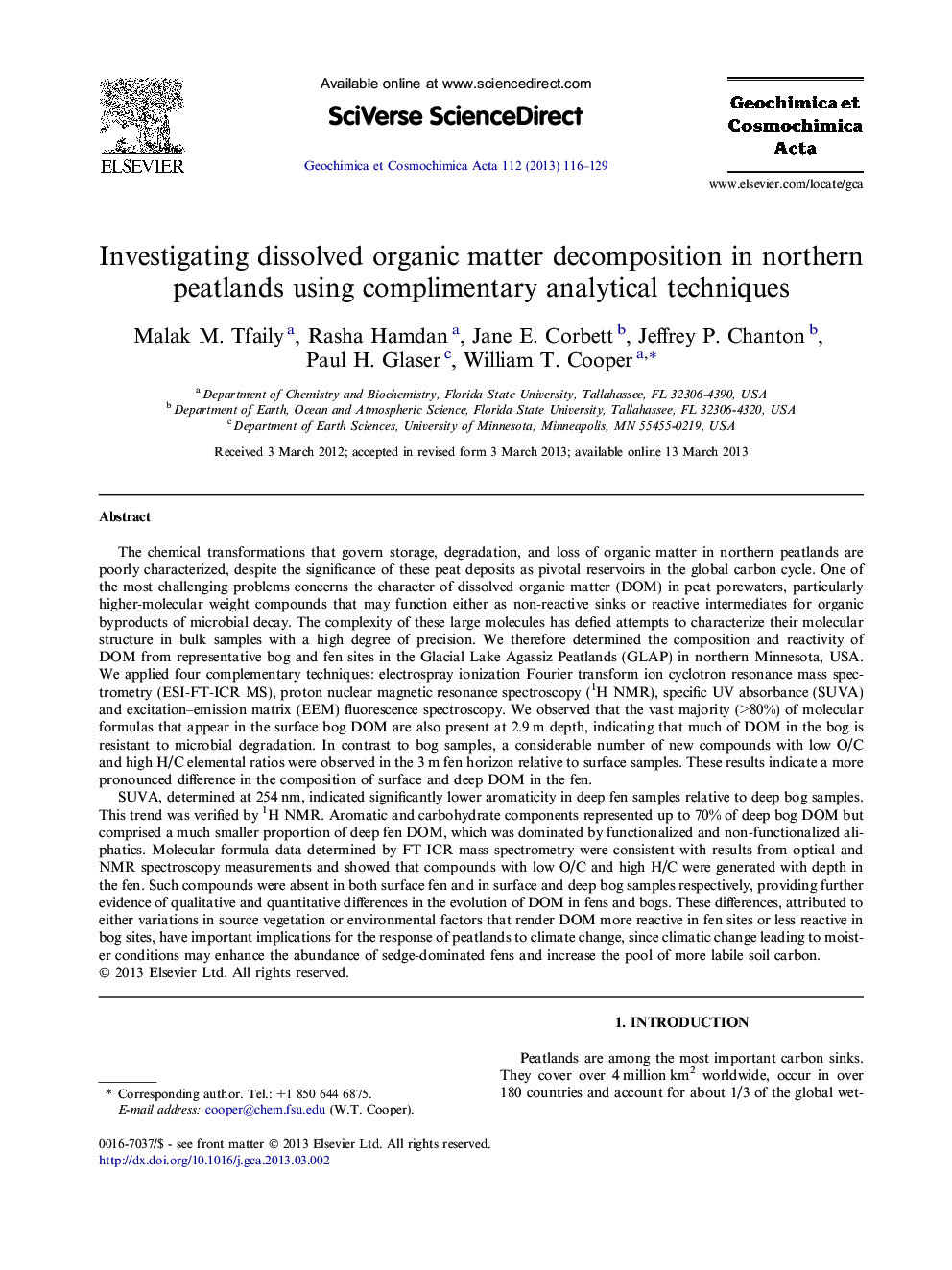| Article ID | Journal | Published Year | Pages | File Type |
|---|---|---|---|---|
| 4702264 | Geochimica et Cosmochimica Acta | 2013 | 14 Pages |
The chemical transformations that govern storage, degradation, and loss of organic matter in northern peatlands are poorly characterized, despite the significance of these peat deposits as pivotal reservoirs in the global carbon cycle. One of the most challenging problems concerns the character of dissolved organic matter (DOM) in peat porewaters, particularly higher-molecular weight compounds that may function either as non-reactive sinks or reactive intermediates for organic byproducts of microbial decay. The complexity of these large molecules has defied attempts to characterize their molecular structure in bulk samples with a high degree of precision. We therefore determined the composition and reactivity of DOM from representative bog and fen sites in the Glacial Lake Agassiz Peatlands (GLAP) in northern Minnesota, USA. We applied four complementary techniques: electrospray ionization Fourier transform ion cyclotron resonance mass spectrometry (ESI-FT-ICR MS), proton nuclear magnetic resonance spectroscopy (1H NMR), specific UV absorbance (SUVA) and excitation–emission matrix (EEM) fluorescence spectroscopy. We observed that the vast majority (>80%) of molecular formulas that appear in the surface bog DOM are also present at 2.9 m depth, indicating that much of DOM in the bog is resistant to microbial degradation. In contrast to bog samples, a considerable number of new compounds with low O/C and high H/C elemental ratios were observed in the 3 m fen horizon relative to surface samples. These results indicate a more pronounced difference in the composition of surface and deep DOM in the fen.SUVA, determined at 254 nm, indicated significantly lower aromaticity in deep fen samples relative to deep bog samples. This trend was verified by 1H NMR. Aromatic and carbohydrate components represented up to 70% of deep bog DOM but comprised a much smaller proportion of deep fen DOM, which was dominated by functionalized and non-functionalized aliphatics. Molecular formula data determined by FT-ICR mass spectrometry were consistent with results from optical and NMR spectroscopy measurements and showed that compounds with low O/C and high H/C were generated with depth in the fen. Such compounds were absent in both surface fen and in surface and deep bog samples respectively, providing further evidence of qualitative and quantitative differences in the evolution of DOM in fens and bogs. These differences, attributed to either variations in source vegetation or environmental factors that render DOM more reactive in fen sites or less reactive in bog sites, have important implications for the response of peatlands to climate change, since climatic change leading to moister conditions may enhance the abundance of sedge-dominated fens and increase the pool of more labile soil carbon.
